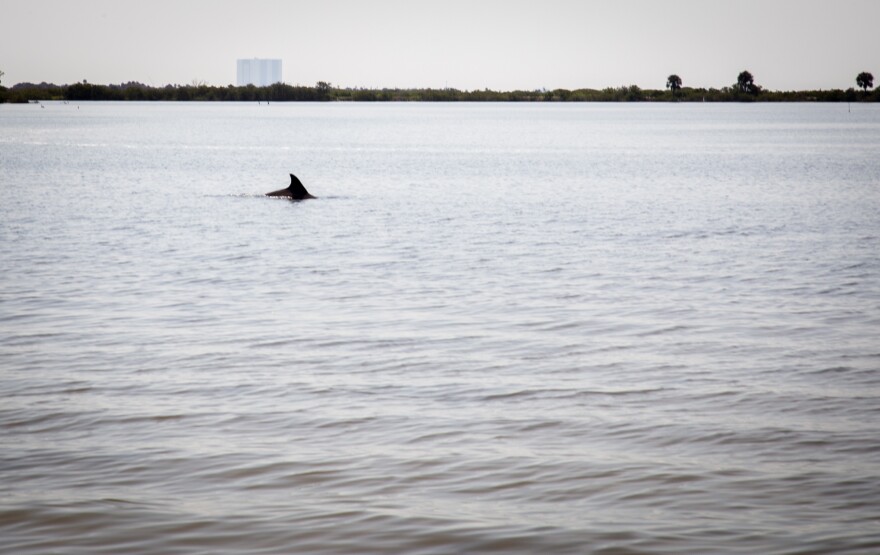A new study links a neurotoxin found in harmful algal blooms in the Indian River Lagoon to brain changes in dolphins there similar to Alzheimer's disease in humans.
Harmful algal blooms or HABs are most common and severe during the warmer "bloom season," generally between the months of June and November in Central Florida. The brains of dolphins stranded during those warmer months contained neurotoxin levels nearly 3,000 times higher than the brains of dolphins stranded during non-bloom season, according to the study published in Nature Communications Biology.
"The key takeaway is that it's just another threat to the dolphin population that we really just need to be cognizant of," said Wendy Noke Durden, who worked on the study. Noke Durden is a research scientist with the Hubbs-SeaWorld Research Institute, a California-based nonprofit with a research laboratory in Melbourne Beach.
Noke Durden said dolphins are a sentinel species, a top-level predator that can serve as a good indicator of ecosystem health.
"The study really reveals how maybe these environmental stressors, like harmful algal blooms, could be accelerating neurodegeneration in these animals," she said.

Dolphins are considered "a natural model of Alzheimer's disease," according to the study, because as they age, dolphins develop the two main neuropathological changes associated with the disease.
The researchers found that dolphin brains showing more signs of Alzheimer's contained higher levels of the neurotoxin 2,4-diaminobutyric acid, or 2,4-DAB. Cyanobacteria, or blue-green algae, can produce 2,4-DAB.
As climate change drives up water temperatures, HABs fueled by cyanobacteria are expected to last longer and intensify, according to the Environmental Protection Agency.
"These (algal) blooms are actually fueled by excess nutrients, but also by warm water," Noke Durden said. "So the more warm temperatures we have, when we have periods of increased temperature,

The study's findings reveal a correlation — not a causation — between neurotoxins and brain changes reflecting dementia in dolphins, Noke Durden said. In other words, while the two variables are linked, the study doesn't prove one is necessarily causing the other.
And although dolphin health can help us gauge environmental health, the study's findings shouldn't necessarily frighten people, Noke Durden said. "Obviously, we should be cognizant of things in the environment that could be harmful to humans, but I wouldn't be too alarmed about it at this point."
Compared to humans, "dolphins have such an exponentially higher risk" of encountering and being affected by the neurotoxins, Noke Durden said. That's largely because dolphins eat 15-20 pounds of fish a day.
"We do believe, probably, the dolphins are getting these toxins as they bioaccumulate in their prey," Noke Durden said. "So that's a much larger exposure risk than the normal human population."
The study's researchers examined the brains of 20 dolphins that were found stranded throughout the Indian River Lagoon between 2010 and 2019. Dolphins from the North Indian River and Banana River tested positive most frequently for the 2,4-DAB toxin, according to the study.
These days, dolphin populations in the lagoon are "pretty stable," Noke Durden said. A leading cause of death is entanglement, when dolphins get tangled up in recreational fishing gear.
The Florida Department of Environmental Protection has a public dashboard tracking different types of algal blooms across the state.
Copyright 2025 Central Florida Public Media





